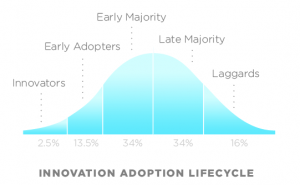Yoga: You’ve Come A Long Way, Baby!
I know that yoga is an ancient science but in the United States, its often been a fringe activity. It was popular in the 60′s, but mostly relegated to the hippie crowd. When I started my practice in the 90′s with Bikram Choudry in Los Angeles, my friends thought I was nuts. Why would you want to go into a 105 degrees room and do painful things to yourself for 90 minutes. “Because it makes me feel and look really good,” I said. The conversation would positively progress, but I could always sense the hesitation. Fast forward to today…about 3/4th of my friends are deeply engaged in a yoga practice! They join the other 16 million yoga practitioners in the US, 77.1% are women and 22.9% are men.
I think its fair to say the yoga has now become a mainstream activity. It was delightful to see a Yoga Room at the San Francisco International Airport. Wow, yoga has come a long way from the fringe.
Why the Evolution in Yoga?
So did the Western world just wake up one day and decide to break into a yoga asana (pose)? In reality, I think yoga followed the path of any great science or technology. Yoga started at the fringe, during which innovative thinkers (innovators) started practicing. Since then, yoga has moved all the way through the adoption curve to where it is today with millions of people practicing yoga today. The innovators, people like Sting, studied and brought yoga deeply into their lives. They talked about it passionately and how wonderful it made them feel (and look, in some cases). As one influential group “convinces” the next to try the technology, or yoga in this case, it becomes adopted by a larger percentage of the population. Considering that 16 million people are practicing yoga, and that 44% of those practitioners have been practicing over 2 years, its fair to say that yoga has become a big part of their lives. It is also fair to say that yoga has reached the early majority stage (of the ‘adoption lifecycle’). This trend is helped by the wide availability of the practice, whether its yoga tapes at Target, or yoga classes at gyms and even workplaces. However, this growth is a bit deceptive in that yoga adoption is concentrated in the major metropolitan areas, so for most of the country its still a fringe activity.
What will take Yoga to the next level of Adoption?
In my yoga class this morning, I thought about this question: how do we get from 16 million to 400MM yogis in the United States? Here is my belief: as more and more studies come out about yoga and its benefits on everything from depression to fibromyalgia to ADHD, physicians and other health care professionals will “prescribe” yoga to their patients. Obviously, the pharmaceutical companies understand the the power of this professional recommendation–they spend millions spent on ‘reps’ that pitch the companies’ latest drugs to physicians and their staff. In the same way, physicians and other health care professionals could provide an “information Rx”. Armed with the new studies, health care professionals would actually “prescribe” yoga to their patients for specific health conditions. My teacher, Bikram Choudry, believes that every health condition arises from stress. If I believe him (and I do), it seems that the whole population would benefit from yoga, whether its gentle flow yoga, pranayama breath work, or the more intense forms such as Bikram and Iyengar.
Another powerful force is that of social proof. At FoundHealth, thousands have shared their experiences on everything from yoga to antidepressants. When people share the power of a treatment with a larger community, we believe that the “good treatments” will start to distinguish themselves and a larger percentage of the population will adopt these treatments. So check out our shared experiences in yoga and add your own “Tried It” and “Prescribed It” experience with yoga. You could kick start a very positive yoga revolution!
To see the shared experience, check out some of these pages:
http://www.foundhealth.com/yoga/experiences
http://www.foundhealth.com/depression/depression-and-yoga/experiences
http://www.foundhealth.com/back-pain/back-pain-and-yoga/experiences
http://www.foundhealth.com/fibromyalgia/fibromyalgia-and-yoga/experiences
References:
Join Our Community
Archives
- January 2023
- December 2022
- September 2022
- August 2022
- June 2022
- May 2022
- April 2022
- March 2022
- February 2022
- January 2022
- December 2021
- November 2021
- October 2021
- September 2021
- August 2021
- July 2021
- June 2021
- May 2021
- March 2021
- September 2020
- August 2020
- July 2020
- June 2020
- May 2020
- April 2020
- March 2020
- February 2020
Subscribe

Sign up to receive FREE toolkit
From Dr. Hyman, #1 NY Times & Amazon Author
We never spam or sell your e-mail





Follow Our Every Move